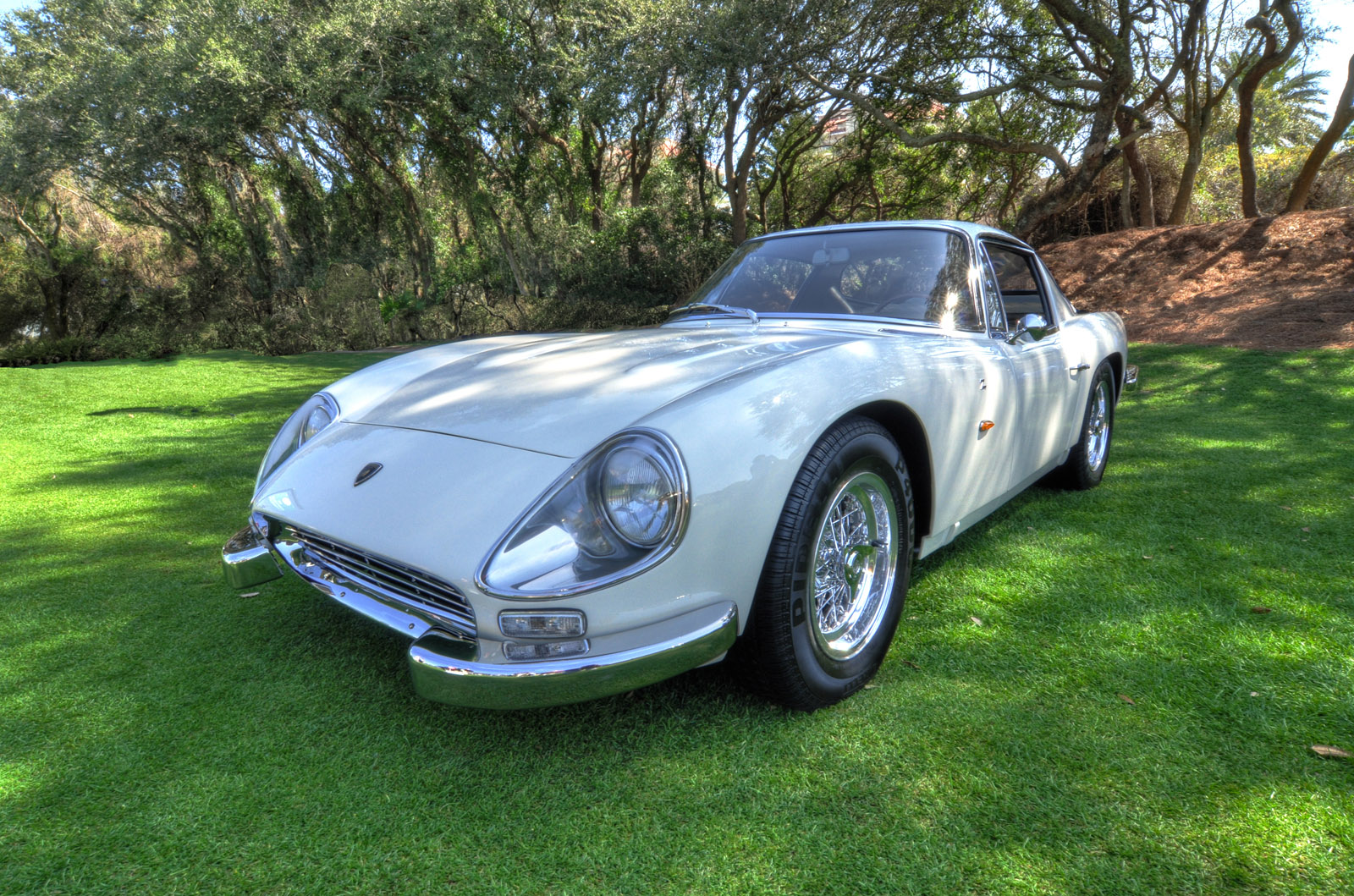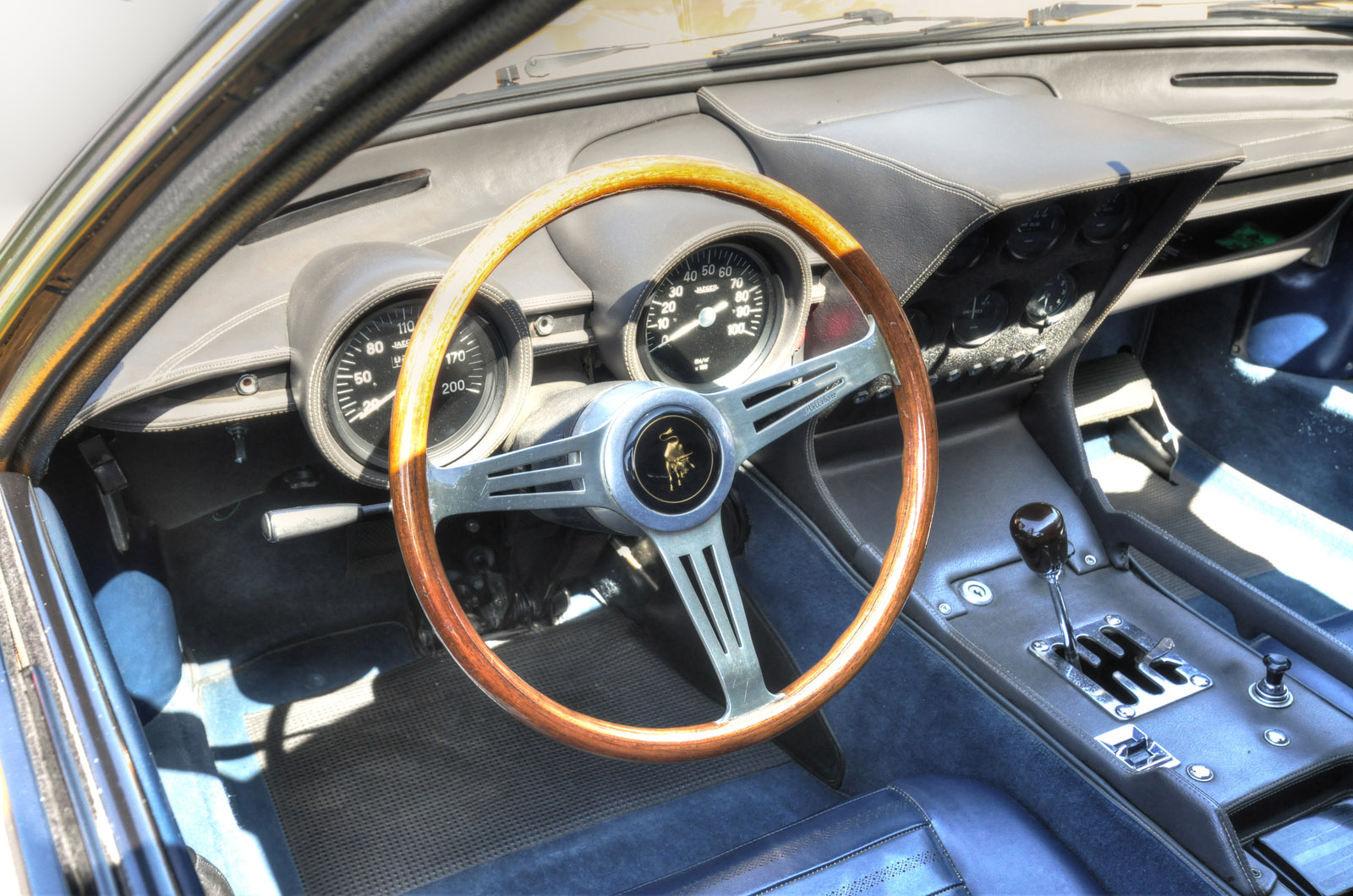
The 1965 Lamborghini 3500 GT Zagato car is powered by a double-overhead-cam, V12, 3.5-liter engine producing 280 horsepower. It has a five-speed manual transmission, fully independent coil-spring suspension with anti-roll bars, worm-and-roller steering and power-assisted Girling disc brakes. It weighs between 2650 - 2734 pounds.
Italian millionaire Ferruccio Lamborghini decided to build his own sports car because of his dissatisfaction with his Ferrari and the company’s failure to address his complaints. Following the prototype 350GTV, Lamborghini’s first production car was a two-seater names the 350GT with a top speed of more than 150 mph. About 120, 350GT coupes were built. Styling elements include recessed headlights, rear wheel semi skirts and a body side crease from the front fender to the door handle.
In 1965 Zagato decided to select a new body to create the Lamborghini 3500 GTZ and was the first coachbuilder to put out a variant of the 350GT. Designed by Ercole Spada this car is one of only two 3500 GT Zagato automobiles ever built.
Overview
- Production Year: 1965
- Manufacturer: Lamborghini
- Coachbuilder: Zagato
- Class: Sports car
- Body Style: 2-door coupe
Design and Specifications
- Engine:
- The 3500 GT Zagato was powered by a 3.5-liter (3464 cc) V12 engine.
- This engine, developed by Giotto Bizzarrini, produced approximately 320 horsepower.
- Transmission: 5-speed manual gearbox
- Chassis: The car was built on the chassis of the Lamborghini 350 GT, featuring a tubular steel frame.
- Suspension:
- Front: Independent suspension with double wishbones, coil springs, and telescopic shock absorbers.
- Rear: Independent suspension with double wishbones, coil springs, and telescopic shock absorbers.
- Brakes: Disc brakes on all four wheels, providing advanced stopping power for the time.
Performance
- Top Speed: The Lamborghini 3500 GT Zagato could reach a top speed of around 150 mph (241 km/h), making it a high-performance sports car in the mid-1960s.
- Acceleration: It could accelerate from 0 to 60 mph in approximately 6.8 seconds, thanks to its powerful V12 engine and lightweight construction.
Design Features
- Bodywork:
- The Zagato-designed body was characterized by its sleek and aerodynamic lines, with distinctive features such as the double-bubble roof, a signature Zagato design element that provided additional headroom and structural rigidity.
- The body was made from lightweight aluminum, contributing to the car's performance and handling.
- Interior: The interior was luxurious yet sporty, with high-quality materials such as leather upholstery, a wooden dashboard, and comprehensive instrumentation aimed at providing an engaging driving experience.
Notable Achievements
- Rarity: Only two examples of the Lamborghini 3500 GT Zagato were ever built, making it one of the rarest Lamborghini models. This rarity adds significantly to its allure and value among collectors.
- Collaboration: The 3500 GT Zagato marks an early and significant collaboration between Lamborghini and Zagato, showcasing the combined expertise of both companies in creating a high-performance, beautifully designed sports car.
Legacy
- Historic Significance: The Lamborghini 3500 GT Zagato is an important model in Lamborghini's history, illustrating the brand's early commitment to performance and innovative design. It also highlights the role of coachbuilders like Zagato in shaping the aesthetics and character of Italian sports cars.
- Collector's Item: Due to its extreme rarity, historical significance, and unique design, the 3500 GT Zagato is highly prized by classic car collectors. It is considered a gem in the world of vintage sports cars, with examples fetching high prices at auctions and in private sales.
You may purchase a print in of the 1965 Lamborghini 3500 GT Zagato our dElegance 2012 online gallery.


